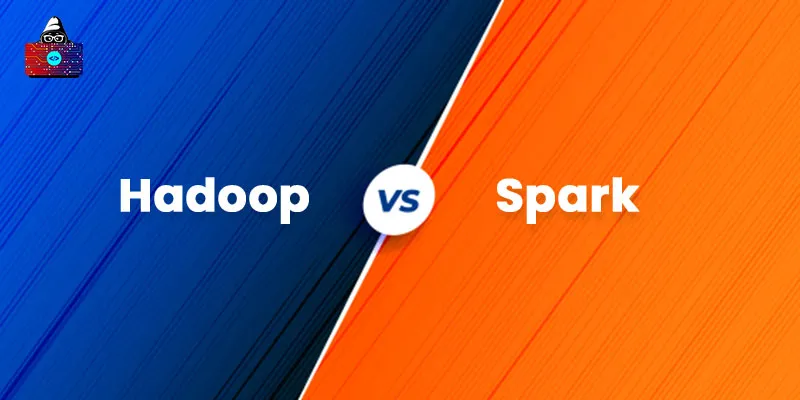Big data has become the center of attention as companies are continuously generating heaps of data that need to be processed. As all of the collected data is not useful, some portions of it may be futile. Therefore, it becomes essential to filter and eliminate useless data. This is where data processing comes into the picture.
The Hadoop framework is one of the most reliable, fault-tolerant, and cost-effective data processing solutions that uses the MapReduce programming model to store and retrieve huge amounts of data. But the primary concern in processing a large dataset is to maintain the speed.
Apache Software Foundation introduced Apache Spark, which uplifts the processing or computational speed of the Hadoop framework. Many people believe that Apache Spark is an extended version of Hadoop. However, it is not true.
This article will help you understand what exactly Apache Spark is and how it works. We will also introduce you to the different components of Apache Spark along with its salient features. So, let’s get started!
What is Apache Spark?
Apache Spark is a distributed and open-source analytics engine that processes incredibly large volumes of data. It is specially used to provide scalability, computational speed, and reliability required for machine learning and artificial intelligence applications. The analytics engine offered by Spark has the capacity to process data 10 to 100 times faster than its alternatives. It has clusters of computers that are fault-tolerant and have built-in parallelism.
Moreover, Spark distributes the processing task across these clusters of computers for faster processing. Apache Spark provides Application Program Interfaces (APIs) for various programming languages, such as R, Python, Java, and Scala. In addition, it supports the processing of different kinds of workloads, like interactive queries, batch processing, machine learning, real-time analytics, and graph processing.
Many renowned organizations use this robust analytics engine, like Zillow, Urban Institute, Yelp, CrowdStrike, FINRA, and DataXu. Currently maintained by the Apache Software Foundation, Apache Spark was developed in 2009 at AMPLab of the University of California, Berkeley.
How Does Apache Spark Work?
Hadoop MapReduce uses a parallel distributed algorithm to process large volumes of data. It involves a sequence of steps to run a job, with each step involving disk read and write, which turns out to be a major challenge. In every step of the process, MapReduce accesses the clusters to read the data, carries out operations, and writes the results back to HDFS. Therefore, Hadoop requires disk read and write in each step, which in turn slows down the job.
Apache Spark overcomes this challenge of Hadoop MapReduce by performing in-memory data processing and reusing the data across several parallel operations, thus reducing the steps in a job. To put it simply, Apache Spark reads data into memory, performs operations, and writes results back to memory.
Therefore, data processing with Apache Spark is quite fast. Additionally, Apache Spark uses an in-memory cache to store data, and it can reuse that data in several Spark operations. It uses Resilient Distributed Dataset (RDD) to reuse data efficiently.
Components of Apache Spark
Following are the different components of Apache Spark:
1. Spark Core
Spark Core is a general execution engine and the heart of the Spark platform. All other components of Apache Spark are built on top of the Spark Core. It provides referencing datasets stored in external storage systems and in-built memory.
Furthermore, Spark Core is responsible for performing all essential I/O functions, monitoring and scheduling tasks, fault-recovery, and effective memory management. It uses a data structure called Resilient Distributed Data (RDD), which is in-memory and fault-tolerant.
2. MLlib
Machine Learning library or MLlib is a low-level library containing several machine learning algorithms . You can call MLlib using Java, Python, and Scala languages. This library is scalable, simple to use, and easy to integrate with other frameworks and tools. With MLlib, you can simplify the process of development and deployment of machine learning pipelines.
Some of the significant machine learning algorithms in MLlib are:
- Support Vector Machines
- Naive Bayes Classifier
- Linear Regression, Logistic Regression
- Basic Statistics
- Decision Trees
- Feature Extraction
- K-Means Clustering
- Hypothesis Testing
3. Spark Streaming
Spark Streaming is responsible for carrying out scalable and fault-tolerant processing of streaming data. It also performs streaming analytics by using Spark Core’s scheduling capability. This Spark component is designed in such a way that an application developed for processing streaming data can be used to process the batches of historical data, with minor modifications.
4. Spark SQL
Spark SQL enables us to query data using Structured Query Language (SQL) and Hive Query Language (HQL), which is an Apache Hive variant of SQL. With the support of Spark SQL to JDBC and ODBC, you can establish connections between Java objects and data warehouses, business intelligence tools, and existing databases.
5. GraphX
GraphX is a dedicated framework on the top of the Spark Core for graph and graph-parallel processing. You can use various operators, like join vertices, subgraph, and aggregate messages to manipulate graphs. Here, a graph does not imply charts, bar graphs, or lines. Instead, it implies graphs in computer sciences, like social media networks. There are millions of users across different social networks, where each user is a vertex of the graph, and the relationship between the users in a network is its edges.
Features of Apache Spark
The following features of Apache Spark make it one of the most popular big data processing platforms:
1. Lightning-fast Processing Speed
When it comes to big data processing, enterprises and businesses choose a framework that can process vast amounts of data in a jiffy. As mentioned earlier, Apache Spark processes big data workloads 10 to 100 times faster than other data processing frameworks.
The data structure of Spark, called Resilient Distributed Database, enables it to store data on the memory, and read or write data to disc only if required. Therefore, it saves disc read and write time while processing the data.
2. Supports Multiple Languages
With Apache Spark, you can build applications in Java, Python, R, and Scala programming languages. It has 80 built-in high-level operators that help you query data from Scala, R, Java, and Python Shells.
3. Supports Sophisticated Analytics
In addition to supporting ‘map’ and ‘reduce’ operations, Apache Spark also supports streaming data and SQL queries. Moreover, it supports advanced analytics, including graph algorithms. Apache Spark has an array of robust libraries, like SQL, GraphX, DataFrames and MLlib, and Spark Streaming. The best part of this framework is that it enables you to combine features of all these libraries inside a single application or workflow
4. Real-time Stream Processing
Apache Spark supports the processing and manipulation of real-time streaming data using Spark Streaming. Also, it can handle data present in clusters. On the other hand, MapReduce can only process the data already present in Hadoop clusters. Spark Streaming is a fault-tolerant system that enables data scientists and data engineers to process the batch and streaming workloads. It processes the batch and streaming data using the same code.
5. Flexible
Apache Spark is flexible and not restrictive because it can run on Hadoop, YARN, Kubernetes, Apache Mesos, and also on the cloud. Furthermore, you can use Apache Spark in a standalone mode, and it supports an array of data source types, including HDFS, Hive, Apache HBase, and Apache Cassandra.
6. Active and Expanding Community
Apache Spark has a thriving community where developers across the globe contribute to creating documentation, adding new features, and improving the performance of Spark.
Conclusion
Apache Spark is a fast and effective data processing and analytics engine used extensively by renowned enterprises across the globe. Though it has an intricate underlying architecture, the way it is designed to ensure speedy data processing is remarkable.
We hope that this article helped you understand what Apache Spark is and how it differs from Hadoop. Also, if you are interested in distributed computing and big data processing, learning Apache Spark would be incredibly beneficial for your career.
People are also reading:




Leave a Comment on this Post